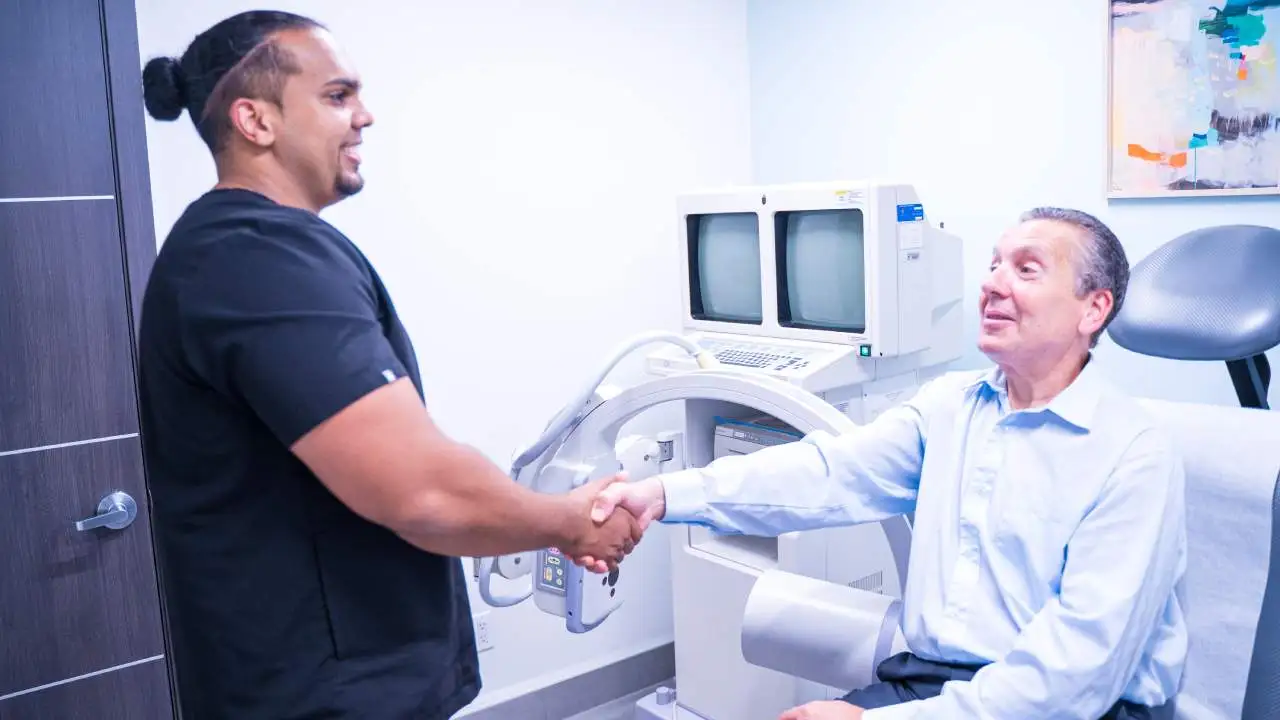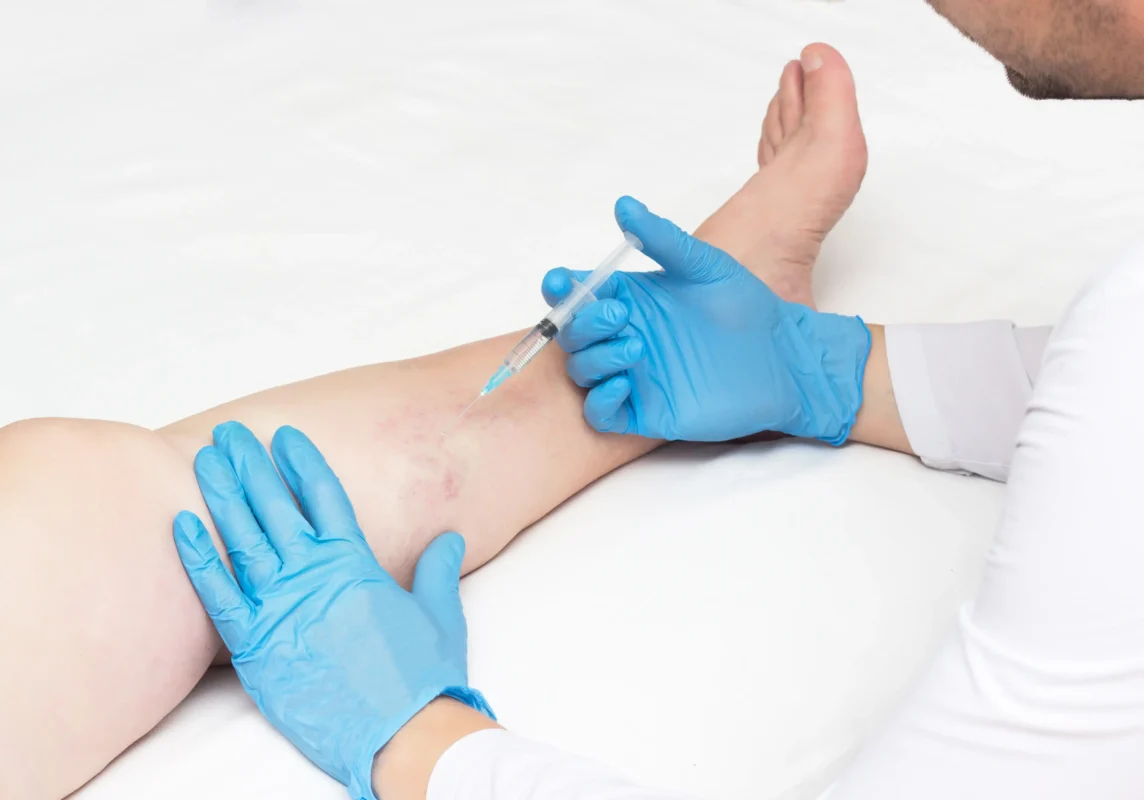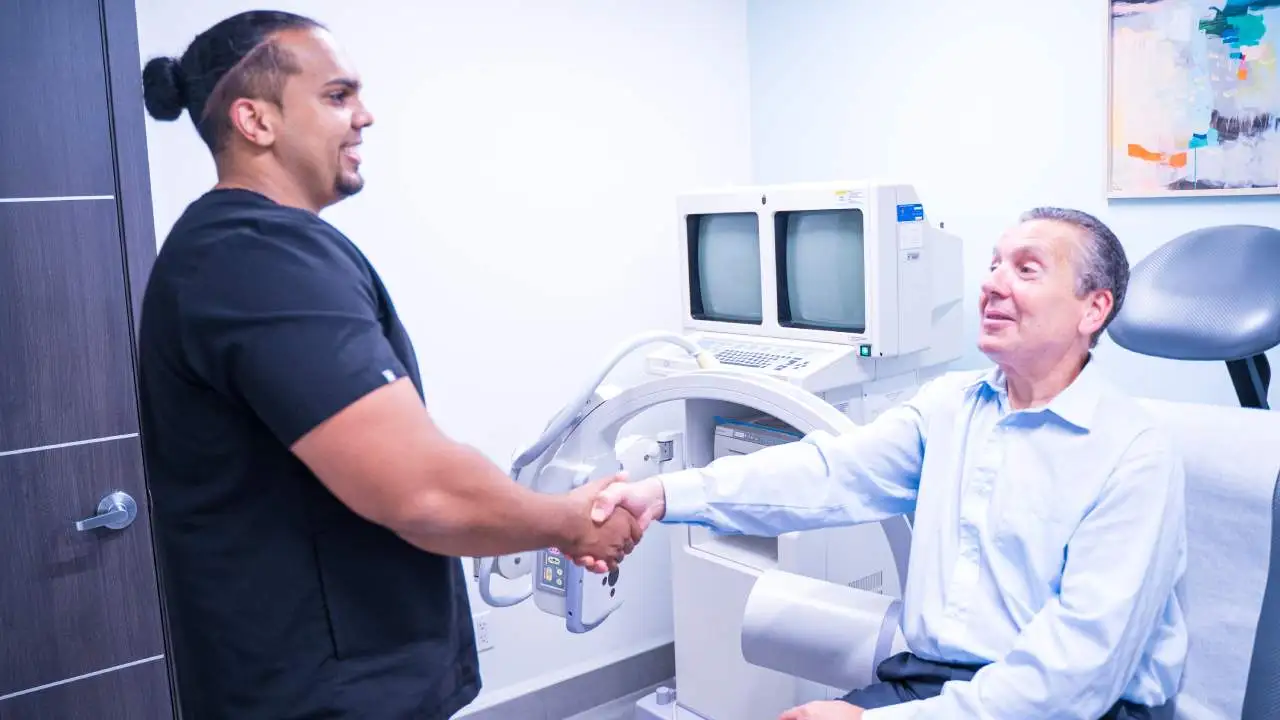Summary
Venous reflux is a condition in which blood fails to flow properly back to the heart, leading to the formation of varicose veins and other symptoms. Dr. Kindelan treats venous reflux with a personalized approach, using minimally invasive techniques such as endovenous laser ablation, VenaSeal, and sclerotherapy.
If you have spider or varicose veins, you may be considering sclerotherapy to eliminate them. Sclerotherapy is a minimally invasive treatment during which a solution is injected into the veins to make them collapse and fade away. It’s an incredibly safe, but no medical procedure is without risks and limitations. As a patient, you deserve a complete understanding of the sclerotherapy treatment, including its possible side effects and risks.
You may need multiple sclerotherapy sessions
The most common complication of sclerotherapy is that the treated veins don’t disappear completely. You may need multiple sclerotherapy treatments to get the desired results. That’s because each sclerotherapy injection can only target one spider vein, so you need multiple sclerotherapy solution injections to target all spider veins. If you have a lot of spider veins, you may need 3 to 4 sclerotherapy sessions. Furthermore, larger veins take longer to resolve.
Allergic reactions to the sclerotherapy solution and other risks
Sclerotherapy treatments also have a small risk of an allergic reaction to the sclerotherapy solution. Allergic reactions to the sclerosing solution are rare but can occur. Symptoms of an allergic reaction may include itching, redness, and swelling at the injection site. You should call your doctor immediately if you experience any of these symptoms.
Larger veins may require multiple injections of the sclerosing solution. There is also a risk of the solution leaking out of the vein and into the surrounding tissues. Furthermore, the blood vessels can get blocked in rare cases, leading to a rare complication called phlebitis. Sclerotherapy treatments can occasionally cause brown staining of the skin. This is usually a temporary side effect that will resolve on its own.
Vein Treatment Clinic maintains a perfect track record
Vein Treatment Clinic is a group of state-of-the-art vein treatment clinics in New York, Long Island, New Jersey, California, and Maryland. Our vein treatment clinics are led by board-certified and Harvard-trained vein experts specializing in cutting-edge spider vein treatments. Instead of simply treating the visible spider veins, our vein doctors perform a thorough evaluation to diagnose the root cause of spider veins and then curate a personalized treatment plan.
We also take all possible precautions to ensure optimal safety and avoid unwanted complications. Our perfect track record is evidenced by our unanimous 5-star ratings and reviews on all online platforms, including Google, Real Self, and Facebook. If you have spider veins or other signs and symptoms of vein disease, please schedule an appointment at your nearest spider vein and varicose vein treatment clinic.
Can sclerotherapy be done wrong?
Sclerotherapy treatments may seem simple, but highly skilled vein doctors must perform them. Sclerotherapy involves injecting a sclerotherapy solution into the treated vein. This solution irritates the vein’s lining, causing it to swell and stick together, following which it’s reabsorbed by the body. However, sclerotherapy can be performed using numerous sclerosing solutions, and inexperienced vein doctors can cause unwanted complications.
Inexperienced vein doctors may use sclerosing solutions that cause considerable muscle cramps, pain, and discomfort. In the past, sclerotherapy was performed using hypertonic saline, which caused considerable pain. Our vein doctors use the latest and safest sclerotherapy solutions to ensure a painless experience. Furthermore, if inexperienced vein doctors inject the sclerotherapy solution into the wrong areas, you may suffer from necrosis or arterial complications.
You must contact the most skilled and talented spider vein doctors for sclerotherapy treatments.
What are the long-term side effects of sclerotherapy?
Sclerotherapy is generally a safe and effective procedure. However, as with any medical procedure, there are potential risks and limitations associated with it. One of the most common risks is an allergic reaction to the sclerotherapy solution. This reaction is typically mild and can be treated with antihistamines.
Another potential risk of sclerotherapy is the development of blood clots in the treated vein. This complication is rare but can occur if the sclerotherapy solution is injected into a larger vein. Blood clots can be dangerous and may require medical treatment. Our vein doctors take all necessary precautions to prevent complications.
Can veins get worse after sclerotherapy?
It is common for the spider veins to worsen before they get better. The sclerotherapy solution makes the spider veins’ walls stick together and become hardened tissues. The hardened scar tissues look dark and hard against the skin’s surface. But your body will soon metabolize the scar tissues, making them disappear from the skin’s surface. After sclerotherapy, it can take around 3 weeks for the spider veins to disappear.
Who is not a candidate for sclerotherapy?
Sclerotherapy is generally safe and effective, but some people should not have the procedure. You should not have sclerotherapy if you are pregnant, breastfeeding, or have a blood clotting disorder. You should also avoid sclerotherapy if you have an allergy to the sclerosing solution or any of the other ingredients in the solution.
How do you know if you have a blood clot after sclerotherapy?
The most common symptom of a blood clot is pain. You may feel a throbbing or cramping sensation in the affected area. The skin may also feel warm to the touch. Some other blood clot symptoms include swelling in the affected area, redness, increased sensitivity, and a feeling of tightness. If you have any of these symptoms, it is important to see a doctor immediately.
It is always recommended to consult a Board-Certified vein doctor if you experience any concerns after sclerotherapy. Our team at Vein Treatment Clinic is here to help diagnose and treat any complications while ensuring a smooth recovery. Most medical insurance plans cover vein treatments, and our expert support team will assist you with the approval process. Schedule your consultation today to receive personalized care from top vein specialists. Book your appointment online now!









